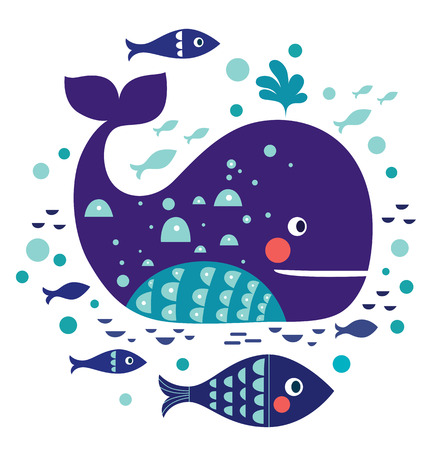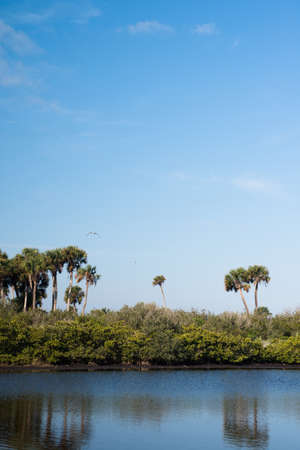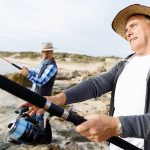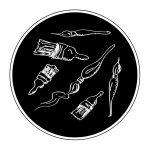1. Understanding Regional Fish Species and Habitats
When it comes to designing fishing lures that actually catch fish, one size definitely doesnt fit all—especially across the diverse waters of the United States. From the cool freshwater lakes of the Midwest to the warm saltwater flats in Florida, different regions mean different fish, and that means different lure strategies.
The Role of Local Fish Species
The first thing to consider when creating or choosing a lure is the type of fish youre targeting. Certain species are more common in specific areas, and they each have their own feeding habits, preferred prey, and reaction to movement, color, and sound. For example, largemouth bass in the Midwest often prefer slower-moving baits like soft plastics or jigs, while redfish in the Florida Flats respond well to flashy spoons and shrimp-imitating lures.
Aquatic Environments Matter
The environment where youre fishing also plays a big role. Water clarity, temperature, depth, vegetation, and current all impact how a lure performs. In murky water with lots of vegetation (like many Midwestern lakes), you’ll want a weedless design with strong vibration or scent. On the clear, shallow flats of Florida, subtle presentations and natural colors are more effective.
Common U.S. Regions and Preferred Lure Features
| Region | Common Target Species | Lure Type | Key Lure Features |
|---|---|---|---|
| Midwest Lakes & Rivers | Largemouth Bass, Smallmouth Bass, Walleye | Jigs, Crankbaits, Soft Plastics | Scented baits, moderate action, weedless designs |
| Northeast Streams & Coastal Waters | Striped Bass, Trout | Spoons, Flies, Topwater Plugs | Naturally colored patterns, surface disturbance for topwater |
| Southeast & Florida Flats | Redfish, Snook, Tarpon | Shrimp imitations, Spoons, Topwaters | Lifelike movement, flash for visibility in clear water |
| Pacific Coast & West Coast Rivers | Salmon, Steelhead, Largemouth Bass (inland) | Spoons, Spinners, Swimbaits | Larger profiles for salmonids; soft plastics for inland bass |
| The South (Texas & Gulf States) | Bass, Catfish, Redfish | Craw imitators, Jerkbaits, Live bait rigs | Darker colors for stained water; durable materials for structure-heavy areas |
Tuning Your Lure Design Based on Location
If youre making your own lures or customizing store-bought ones, think about what local predators eat naturally. Match your lure’s size and color to local baitfish or crustaceans. Also consider how aggressive the fish are in that region—some areas demand fast action lures with rattles; others need slow finesse presentations.
A Quick Tip:
If youre not sure where to start with regional lure design, talk to local anglers or visit nearby tackle shops—they’ll know what’s working based on season and location.
This understanding of regional fish behavior and habitat helps build a solid foundation for creating lures that don’t just look good—but actually catch fish.
Lure Preferences in the Midwest
The Midwest is home to some of the most iconic freshwater fishing spots in the U.S., with thousands of lakes, rivers, and reservoirs. Anglers here often target species like walleye, smallmouth bass, largemouth bass, and northern pike. Because of this variety, lure selection is all about matching local conditions and fish behavior.
Understanding the Waters
Midwestern waters range from clear natural lakes in Minnesota and Wisconsin to murky rivers in Illinois and Ohio. Water clarity and temperature can change dramatically throughout the year, especially with the region’s distinct seasons. Ice-out in spring or weed growth in summer can influence which lures perform best. Locals often adjust their tackle boxes based on seasonal changes and target species.
Top Lure Choices by Species
Here’s a quick breakdown of popular lures Midwestern anglers use for key gamefish:
| Species | Popular Lures | Why They Work |
|---|---|---|
| Walleye | Jig heads with soft plastics, crankbaits, bottom bouncers with live bait rigs | Effective for slow presentations near structure; mimic baitfish and leeches |
| Smallmouth Bass | Tubes, spinnerbaits, topwater poppers | Mimic crawfish and minnows; great for rocky shorelines and river currents |
| Northern Pike | Spoons, large jerkbaits, inline spinners | Create flash and vibration that attract aggressive strikes from big predators |
Regional Favorites and Local Tips
In places like Lake Mille Lacs (Minnesota) or Lake Erie (Ohio), anglers swear by particular colors and patterns. For example:
- Firetiger crankbaits: A go-to for stained waters—bright and visible.
- Purple or chartreuse jigs: Favored during low-light or overcast days.
- Craw-colored tubes: Excellent for smallmouths in rocky lakebeds.
Tackle Tip:
Because of the varied terrain—rocks, weeds, drop-offs—it’s smart to carry multiple weights of jig heads and different retrieve-speed options like suspending jerkbaits or lipless crankbaits. Midwest anglers are known for adjusting quickly to what the fish are telling them.
Did You Know?
The “Lindy Rig,” a classic live bait rig used for walleye, was invented in Minnesota and is still widely used across the Midwest today.
This regional knowledge helps anglers fine-tune their lure choices to maximize success on any given day. Whether youre trolling deep on Lake Michigan or casting along a weedy shoreline in Wisconsin, having the right lure makes all the difference.

3. Northeastern Waters: Cold Currents and Classic Tactics
The Northeast is home to a wide variety of fishing environments, from chilly freshwater lakes to salty coastal bays. Because of the colder water temperatures and diverse fish species, anglers here need to choose their lures carefully to match local conditions. Two of the most targeted species in this region are striped bass along the coast and trout in inland streams and rivers.
Understanding the Conditions
Northeastern waters tend to be colder year-round compared to other U.S. regions. This affects how fish behave—theyre often slower and more cautious, especially in early spring and late fall. Anglers need to use lures that mimic natural movements but also grab attention without being too aggressive.
Lure Designs for Coastal Saltwater: Targeting Striped Bass
Striped bass, or “stripers,” are a favorite among saltwater anglers along the New England coast. They feed on baitfish like menhaden and sand eels, so lures should reflect those prey types.
| Lure Type | Description | Best Use |
|---|---|---|
| Swimbaits | Soft-bodied lures with paddle tails that mimic swimming baitfish. | Dawn or dusk near rocky shorelines or jetties. |
| Poppers | Topwater lures that create splash and noise to attract surface-feeding stripers. | Warmer months when bass are active near the surface. |
| Bucktail Jigs | A classic Northeast lure made with hair tied around a jig head; versatile and effective. | Year-round; great for deeper waters or strong currents. |
Lure Designs for Freshwater: Targeting Trout
Northeastern streams and lakes hold populations of rainbow, brown, and brook trout. These fish respond best to subtle presentations, especially in clear, cold water where they can be easily spooked.
| Lure Type | Description | Best Use |
|---|---|---|
| Inline Spinners | Tiny metal blades spin as theyre retrieved, imitating small baitfish or insects. | Casting upstream in moving water during spring hatches. |
| Spoons | C-shaped metal lures that flutter as they sink—great for deeper pools. | Lakes or deep river bends in cooler months. |
| Minnow Imitations | Small hardbaits that look like juvenile fish; suspending models work well in still water. | Ponds or slow-moving creeks under overcast skies. |
Tweaking Color and Size by Season
Lure color and size can make all the difference in the Northeast. In spring, go smaller and use natural colors like silver or olive green. As summer arrives, slightly larger lures with brighter accents (like chartreuse) can trigger more strikes. In fall, browns and golds imitate dying baitfish—perfect for aggressive pre-winter feeding behavior.
Northeast Tip:
If youre unsure what local fish are feeding on, check shoreline debris or birds diving into schools of baitfish. Matching your lure to these signs can significantly improve your chances of success.
4. Southern Styles: Crankbaits and Creature Baits
Fishing in the southern United States—from the bayous of Louisiana to the lakes of Georgia and the reservoirs of Texas—means dealing with warm water, thick vegetation, and a wide range of fish species. Two of the most effective lure types in this region are crankbaits and creature baits, especially when targeting largemouth bass and catfish.
Why Southern Waters Need Specific Lures
The South’s warmer climate means longer growing seasons for baitfish and insects, leading to larger predator fish. Largemouth bass grow big here, and they love to strike at moving targets. Meanwhile, catfish hunt mostly by scent but are also drawn to movement in murky waters. Anglers need lures that can perform in weedy areas, stained water, and high temperatures.
Crankbaits: Built for Reaction Strikes
Crankbaits are a go-to choice when bass are feeding aggressively. Their wobble mimics struggling baitfish, triggering reaction strikes even from lazy fish hiding under cover. In Southern waters, anglers often choose crankbaits with bold colors like chartreuse, fire tiger, or red craw because these stand out in stained or muddy water.
Choosing the Right Crankbait
| Water Condition | Recommended Color | Diving Depth |
|---|---|---|
| Muddy or Stained | Chartreuse or Fire Tiger | Shallow (3-6 ft) |
| Clear | Naturals like Shad or Bluegill | Medium to Deep (6-12+ ft) |
Lakes like Sam Rayburn in Texas or Lake Guntersville in Alabama are known for submerged timber and hydrilla beds—perfect places to run a crankbait just above cover where big bass lurk.
Creature Baits: Versatile and Realistic
If youre fishing heavy cover or pressured waters, creature baits shine. These soft plastics imitate everything from crawfish to salamanders. Their many appendages create lifelike motion that works well on a Texas rig, Carolina rig, or as a jig trailer.
Top Creature Bait Picks for the South
- Craw-style Baits: Great for flipping into heavy cover near docks or laydowns.
- Lizard-style Baits: Especially popular during spawning season around shallow flats.
- Twin-tail Grubs: Ideal as trailers on flipping jigs or swim jigs.
Lure Size and Movement Tips
Bigger baits tend to work better in Southern lakes due to the abundance of large forage. Slow presentations often win out during hot summer days when fish retreat to deeper structure. In spring and fall, more aggressive retrieves trigger strikes when bass move shallow to feed.
Catering to Catfish with Scented Soft Plastics
Cats aren’t always caught on live bait. In recent years, scented soft plastics have gained popularity among Southern anglers targeting channel and blue catfish. Look for large-profile baits infused with blood, garlic, or cheese scents that can be drifted along river channels or anchored near brush piles.
5. The Florida Flats: Precision in Shallow Water
Fishing the Florida Flats is a unique experience that demands precision, patience, and the right lure design. This regions crystal-clear, shallow waters are home to some of the most exciting inshore gamefish in the U.S.—snook, tarpon, and redfish. Since youre often sight fishing in these conditions, your lure choice needs to be on point to mimic natural prey and trigger strikes from wary fish.
Essential Lure Characteristics for Sight Fishing
When targeting fish on the flats, especially under bright sun and calm water, the presentation of your lure becomes everything. Here are the key features to look for:
| Lure Feature | Why It Matters |
|---|---|
| Realistic Baitfish Imitation | Snook, tarpon, and redfish feed on mullet, pilchards, and pinfish. Lures should match size, color, and swimming action of local forage. |
| Slow-Sinking Design | Allows you to keep the lure in the strike zone longer without spooking fish in shallow water. |
| Natural Colors | Camo-style finishes like silver, bone white, or olive green help avoid detection by sharp-eyed predators. |
| Quiet Entry & Retrieve | A soft splashdown and subtle movement prevent startling fish in clear, calm water. |
| Weedless Rigging Options | Helps navigate seagrass beds and mangrove shorelines without snagging. |
Lure Types That Excel on the Flats
While several lures can work on the flats, some consistently outperform others due to their lifelike appearance and versatility. Here’s a quick guide:
| Lure Type | Best Use |
|---|---|
| Soft Plastic Jerkbaits | Great for mimicking injured baitfish with twitch-pause retrieves; perfect for redfish and snook. |
| Suspending Twitchbaits | Effective when fish are mid-water column; ideal for targeting cruising tarpon. |
| Shrimp Imitations | A go-to when fish are feeding lower; work well near oyster beds or grassy flats. |
| Spoon Lures (weedless) | Useful for covering water quickly while avoiding seagrass snags; attracts redfish and snook. |
Tips for Maximum Effectiveness
- Use fluorocarbon leaders for stealth—it disappears underwater better than monofilament.
- Keep casts long and accurate to avoid spooking fish before they see your lure.
- Match your retrieve speed to the behavior of the baitfish in that area—slower usually wins on pressured flats.
- Pay attention to tide movement; outgoing tides often concentrate bait and predators along edges and channels.
The Florida Flats demand a different level of finesse compared to deeper or murkier waters. With the right lures designed specifically for this environment—especially those that look alive and move naturally—you’ll increase your chances of hooking into trophy-class snook, redfish, or rolling tarpon just beneath the surface.
6. Adapting Lure Design to Seasonal Patterns
Across the U.S., fishing conditions shift dramatically with the seasons. Whether youre casting in the chilly lakes of the Midwest or the warm flats of Florida, understanding how seasonal changes affect fish behavior can help you pick or design lures that get results. Key factors like spawning periods, water clarity, and temperature swings all play a role in how visible your lure is, how it moves in the water, and even what its made of.
Spawning Seasons and Lure Behavior
During the spawning season, fish become more territorial and aggressive. In places like the Midwest during spring, bass are known to strike at intruding lures out of instinct rather than hunger. This means your lure design should emphasize provoking a reaction—think bright colors and erratic movements. In contrast, southern species like redfish in Florida may show less aggression during their spawn, so subtle action and natural colors work better.
Lure Action by Region and Season
| Region | Season | Lure Action | Recommended Designs |
|---|---|---|---|
| Midwest | Spring (Spawn) | Aggressive & Erratic | Lipless crankbaits, chatterbaits with vibrant skirts |
| Southeast (Florida Flats) | Spring/Summer | Subtle & Natural | Soft plastics with slow twitch action, shrimp imitations |
Water Clarity: Color and Visibility Matter
Water clarity varies from muddy rivers in Texas to gin-clear lakes in Michigan. During spring runoff or after summer storms, waters tend to be murkier. In these cases, brighter colors like chartreuse or white help fish spot your lure. In clearer waters, especially in fall when algae levels drop, natural hues like green pumpkin or baitfish patterns are more effective.
Lure Color Selection Based on Water Clarity
| Water Clarity | Best Lure Colors | Suggested Materials |
|---|---|---|
| Muddy/Stained | Chartreuse, Fire Tiger, Black/Blue | Opaque plastics, reflective hard baits |
| Clear | Natural shad, Green Pumpkin, Watermelon Red Flake | Translucent plastics, subtle finishes |
Temperature Shifts and Material Choices
The temperature of the water affects both fish metabolism and how your lure behaves. In colder northern waters during fall or early spring, soft plastics can stiffen up and lose their action. Using more flexible materials like silicone-based skirts or hand-poured soft baits can maintain proper movement. On the flip side, in hot southern summers, softer plastics may degrade faster or become too limp. Heat-resistant blends are better suited for Florida’s sun-baked shallows.
Material Selection by Temperature Range
| Temperature Range (°F) | Lure Material Recommendation |
|---|---|
| Below 50°F (Cold) | Softer silicone skirts, hand-poured plastics for flexibility |
| 50–75°F (Moderate) | Standard PVC-based soft plastics and hard baits work well |
| Above 75°F (Hot) | Durable heat-resistant blends, tougher plastic formulations |
By aligning your lure designs with seasonal shifts across different U.S. regions—from icy Northern lakes to warm Southern coasts—you’ll increase your chances of getting strikes year-round. Keep an eye on local conditions and tweak your approach accordingly for better success on every trip.


